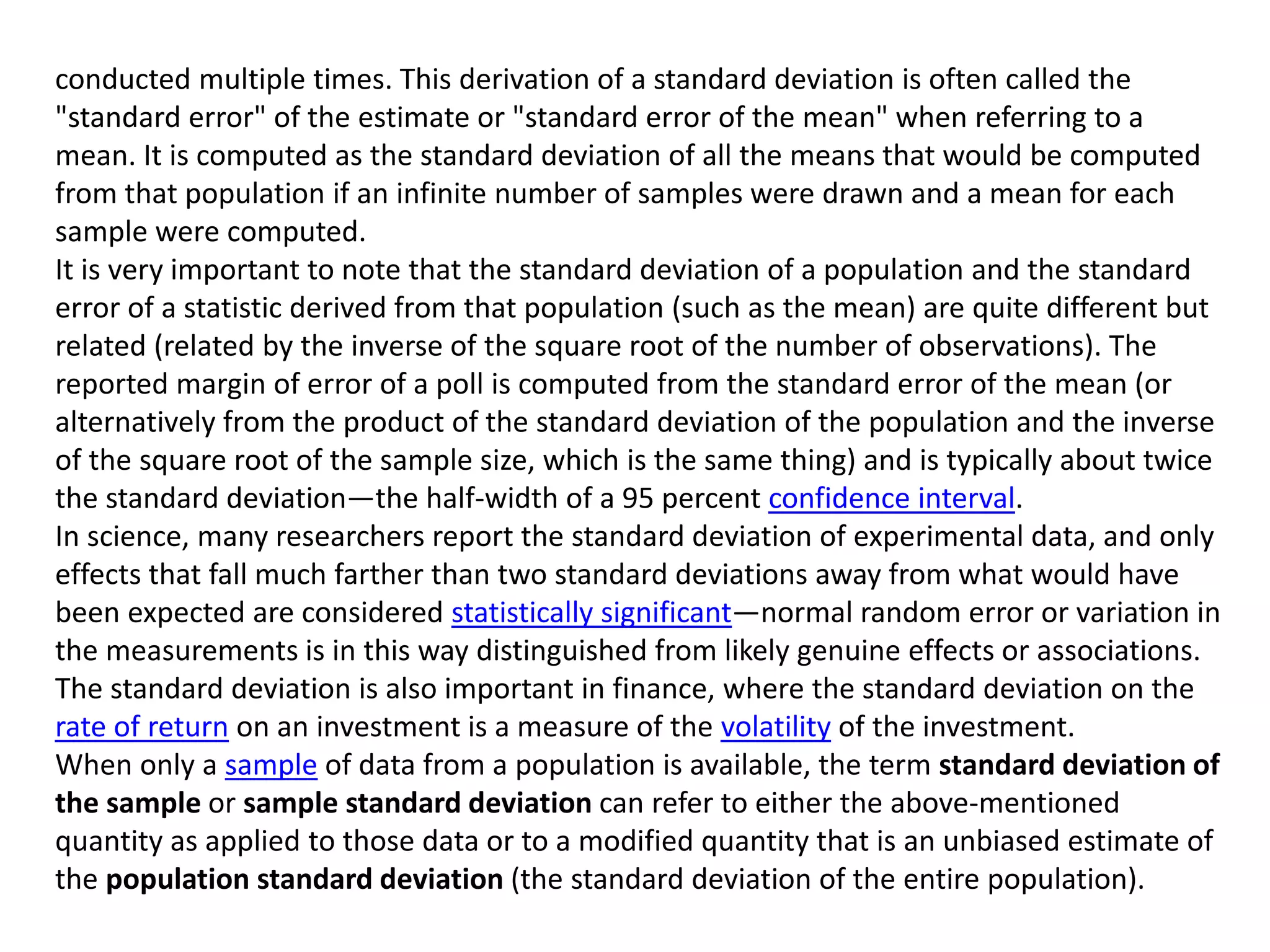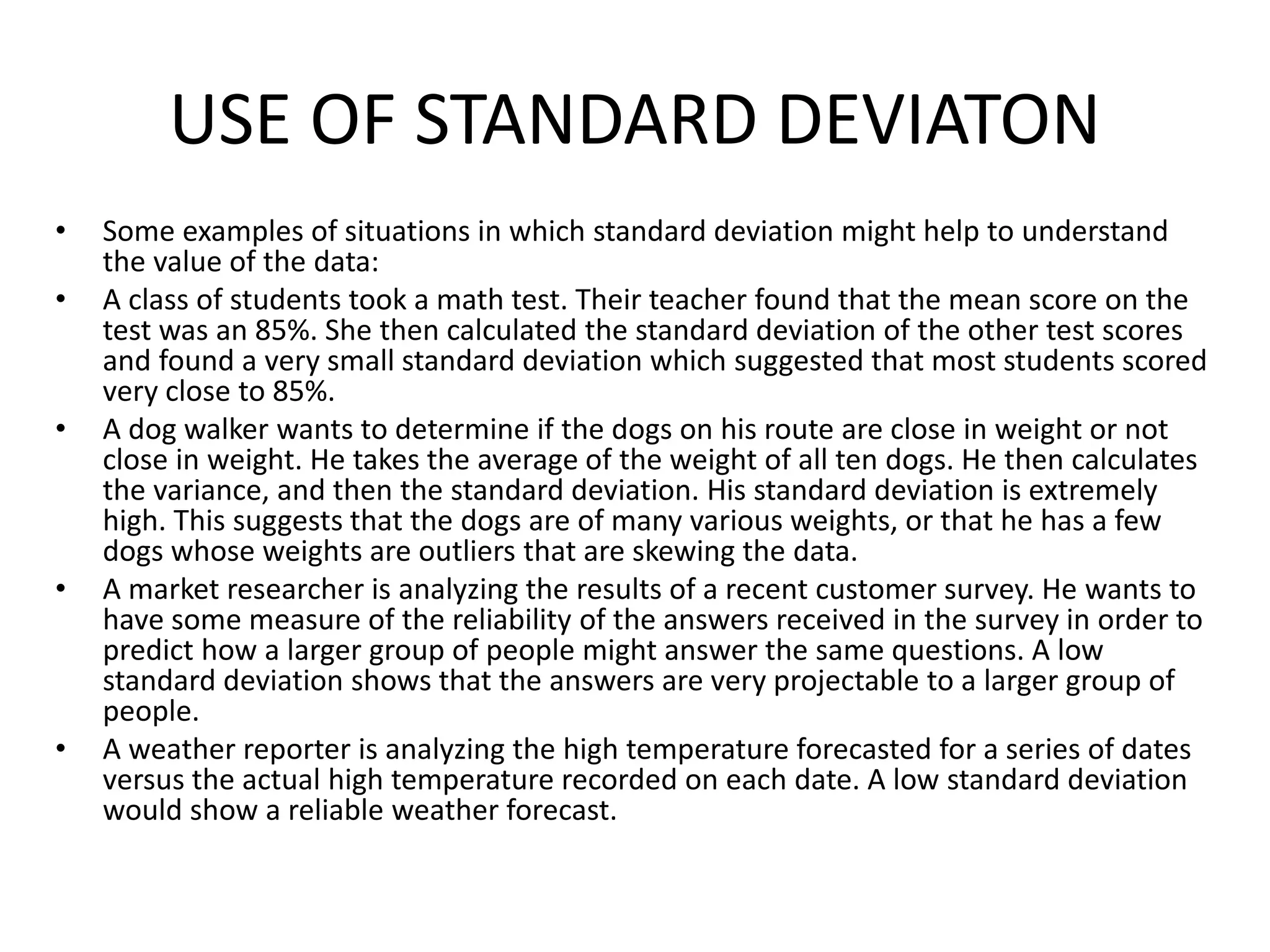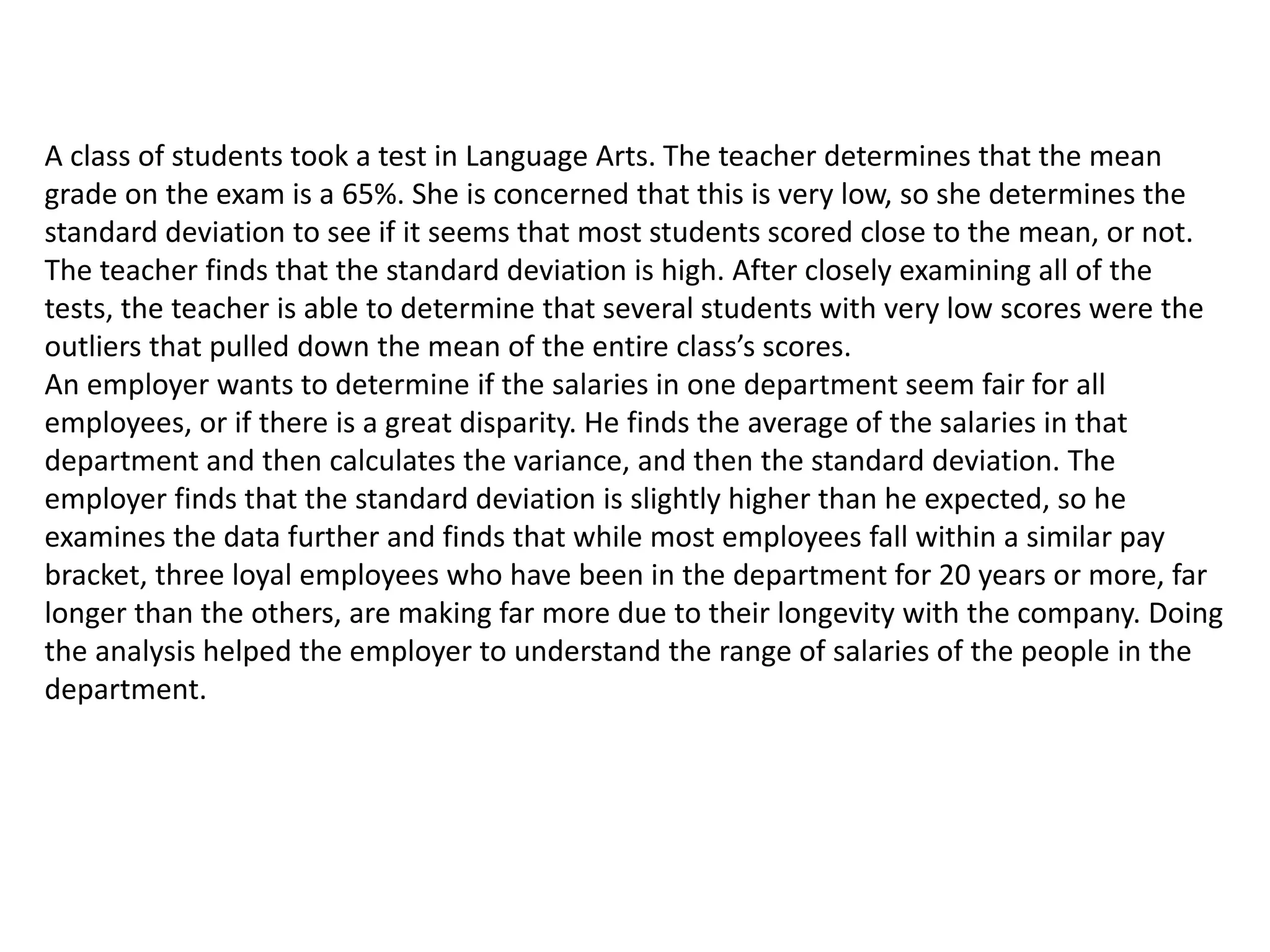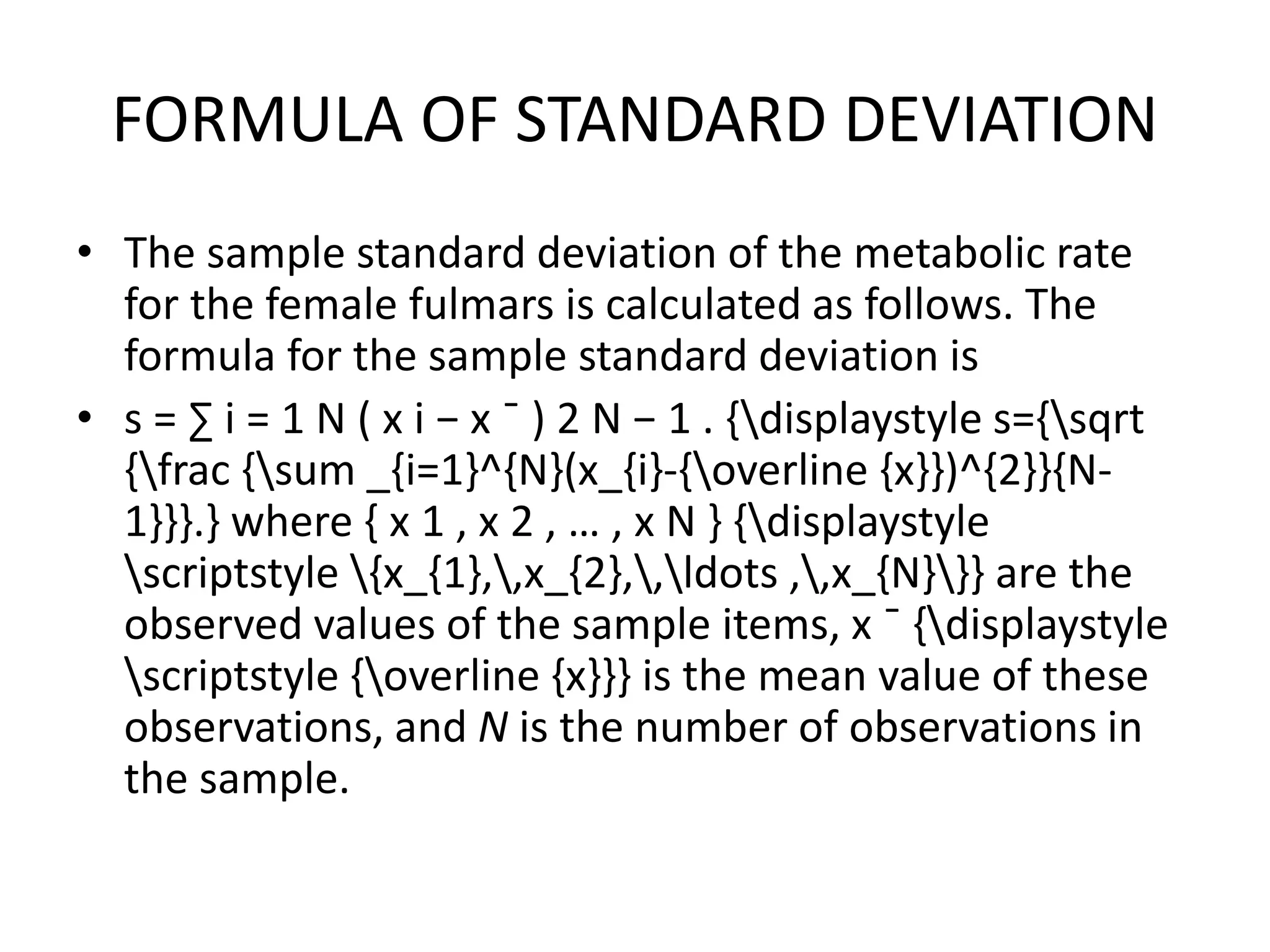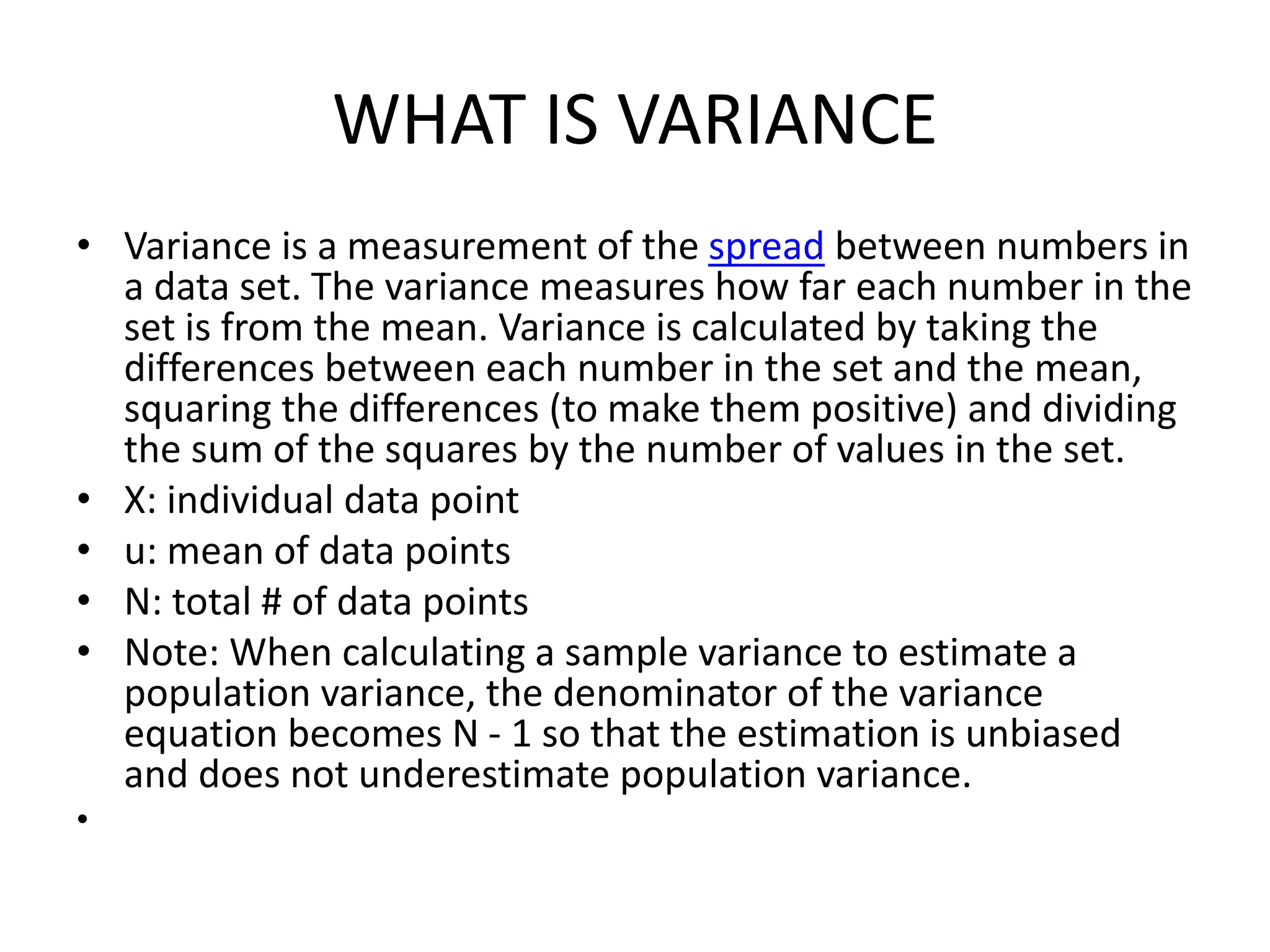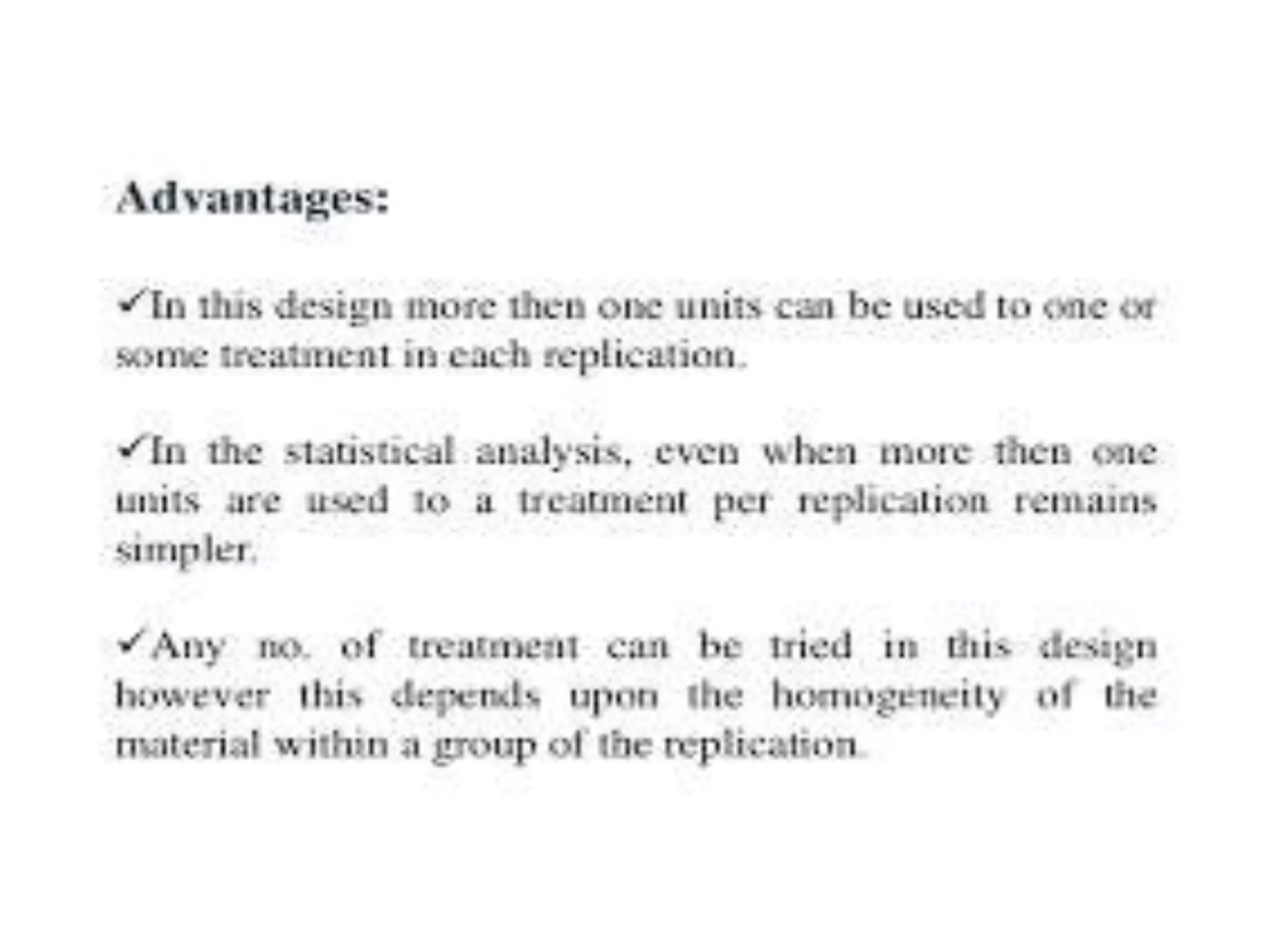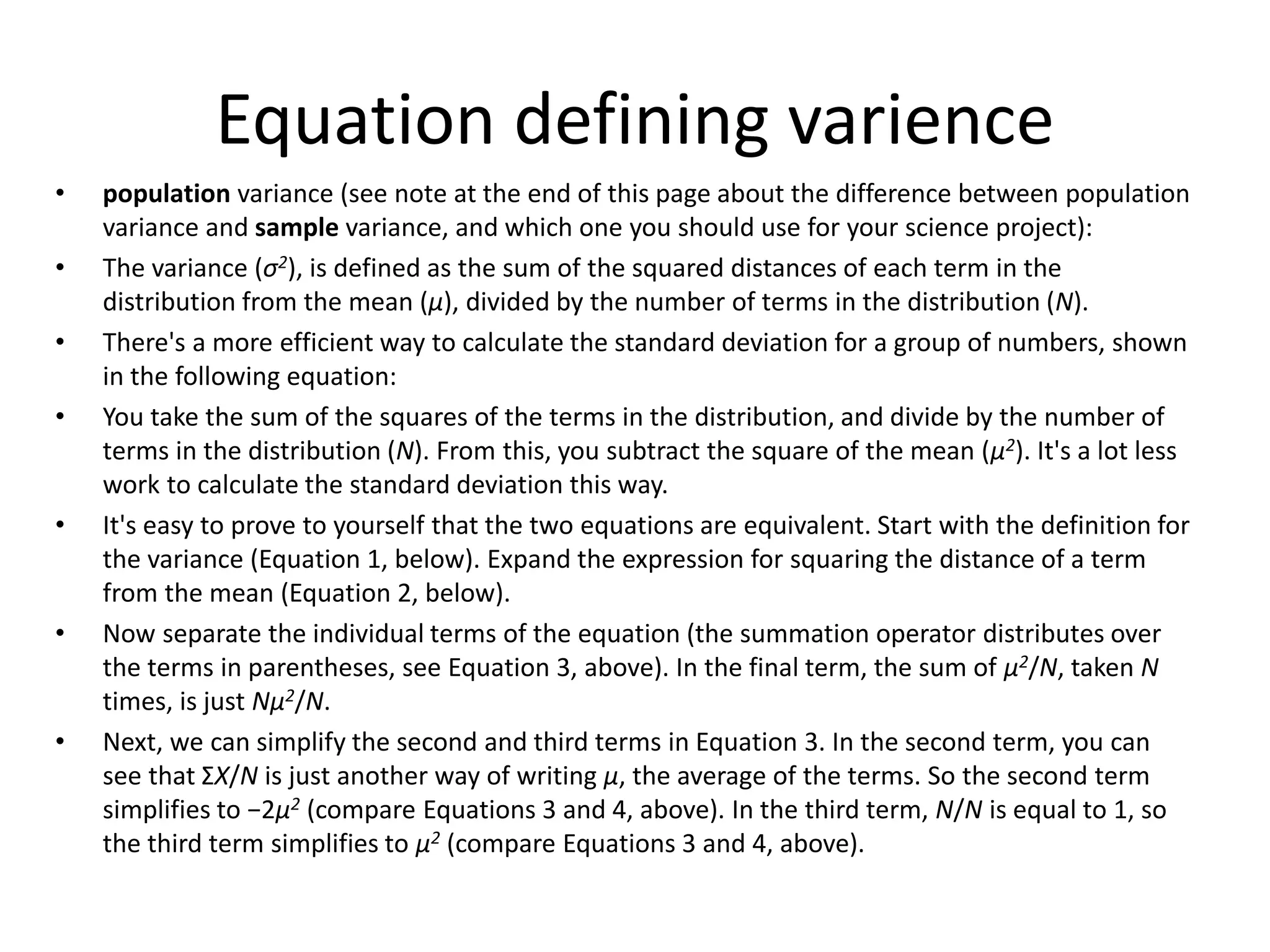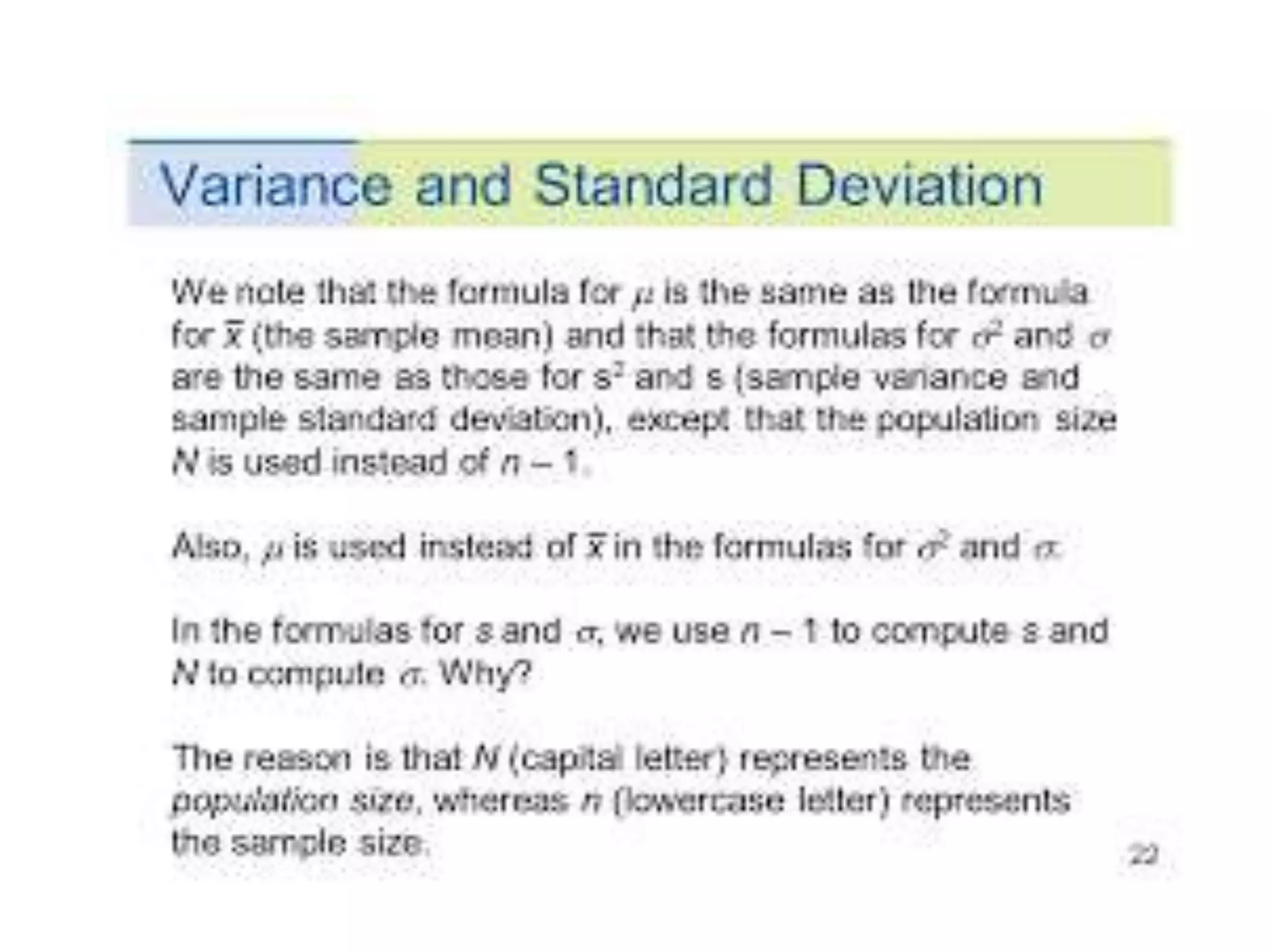A teacher calculated the standard deviation of test scores to see how close students scored to the mean grade of 65%. She found the standard deviation was high, indicating outliers pulled the mean down. An employer also calculated standard deviation to analyze salary fairness, finding it slightly high due to long-time employees making more. Standard deviation measures dispersion from the mean, with low values showing close grouping and high values showing a wider spread. It is calculated using the variance formula of summing the squared differences from the mean divided by the number of values.
![Standard Deviation
In statistics, the standard deviation (SD, also represented by the Greek letter
sigma σ or the Latin letter s) is a measure that is used to quantify the amount
of variation or dispersion of a set of data values.[1] A low standard deviation
indicates that the data points tend to be close to the mean (also called the
expected value) of the set, while a high standard deviation indicates that the
data points are spread out over a wider range of values.
The standard deviation of a random variable, statistical population, data set,
or probability distribution is the square root of its variance. It is algebraically
simpler, though in practice less robust, than the average absolute
deviation.[2][3] A useful property of the standard deviation is that, unlike the
variance, it is expressed in the same units as the data. There are also other
measures of deviation from the norm, including average absolute deviation,
which provide different mathematical properties from standard deviation.[4]
In addition to expressing the variability of a population, the standard deviation
is commonly used to measure confidence in statistical conclusions. For
example, the margin of error in polling data is determined by calculating the
expected standard deviation in the results if the same poll were to be](https://image.slidesharecdn.com/standarddeviation-180328162400/75/Standard-deviation-1-2048.jpg)
